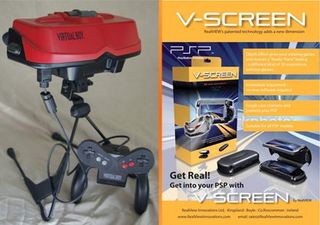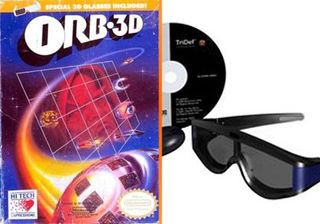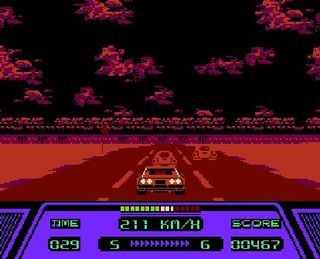5 failed attempts at motion controls and 3D gaming
We compare past failures against their modern (and successful) descendants

Classic failure: Virtual Boy (1995)
Current technology: V-Screen (2009)
Nintendo’s Virtual Boy may go down in history as one of the worst bits of gaming, period. It was touted as the first portable console with real 3D graphics, but it should have been hyped as the first system to induce severe headaches and eye-searing crimson anguish. Yes, the games did appear in 3D, but the very act of looking at the damn thing made you want to claw your face off.
Above: Engadget’s review of the V-Screen. Spoiler: who cares
Recently RealView introduced the V-Screen – a clip-on attachment that is said to add depth to PSP games. The problem, as you can imagine, is the PSP’s screen is two dimensional and can’t retroactively produce a 3D image. So the V-Screen is a $40 hunk of plastic that kinda-sorta makes your screen wavy and stressful to stare at. Better off trying the Nvidia 3D vision, complete with glasses:
Above: Left 4 Dead, Arkham Asylum and Resident Evil 5 all play pretty well
3D is the hottest of all the hot buzzwords these days (you can thank Avatar for that) so don’t expect developers to abandon it until some embarrassing retail failure scares everyone off. Could be that the tech is far enough along that our homes are ready for 3D games. But even if that’s the case, the V-Screen and Virtual Boy will have had nothing to contribute to the cause.
Sign up to the 12DOVE Newsletter
Weekly digests, tales from the communities you love, and more

Classic failure: Orb-3D with glasses (1991)
Current technology: 3D HDTVs with glasses (2009)
3D hit fast and hard in the ‘80s, then utterly vanished after dozens of shoddy films did nothing with the tech but “whoooa it’s threeee deeee.” By 1991, Orb 3D’s paltry attempt at 8-bit amazement fell flat. If you think movies and games of 2010 look bad in 3D, imagine what it was like 20 years ago.
Above: Dear god
Even before Orb 3D stunk up the NES, Square (now Square-Enix) tried to pawn off cheap-o 3D effects with Rad Racer and 3D Worldrunner, two games that you could scramble into a vaguely three-dimensional image by hitting Select.

Above: Guess what didn’t work very well
Today, the rage is the aforementioned 3D glasses and compatible TVs. In general, HDTVs with a refresh rate of 120hz or higher will be able to display the image correctly (tech nerds feel free to correct us), ideally resulting in an experience that’s on par with what we get in theaters today.
When it works, 3D is fun tech to play with and parade around on a stage, but will we all want to buy new TVs just to take advantage of something that already had a shot at the spotlight and fizzled? Idealism yields to skepticism when quadruple digit investments are on the line. We’re repeating ourselves here, but E3 (and the following holiday season) could be the make or break moment for motion and 3D control – definitely keep your eyes and ears fixed here June 15-17 for our take.
May 20, 2010


Your games never looked this good. But is it worth it?

The tech is HERE – what you need to know to avoid getting screwed

How waggle may one day crumple the industry
Most Popular






